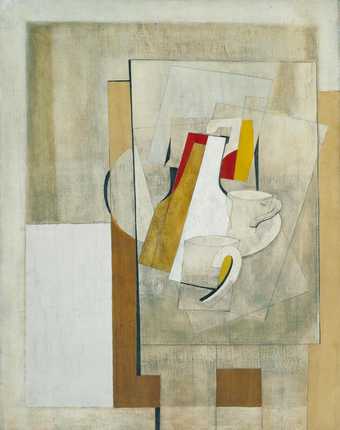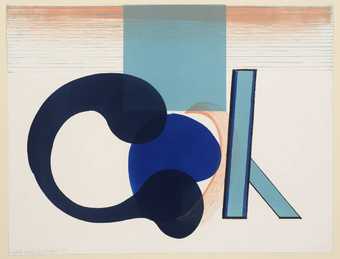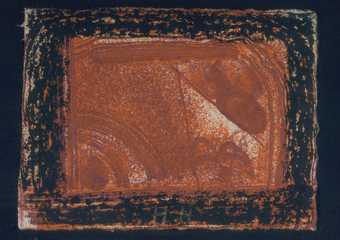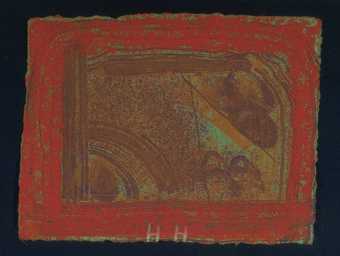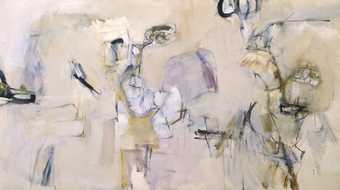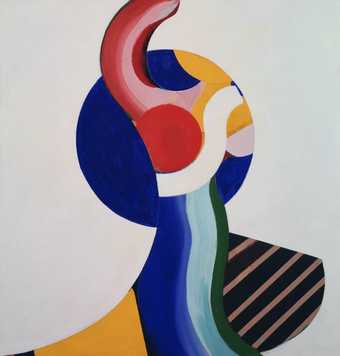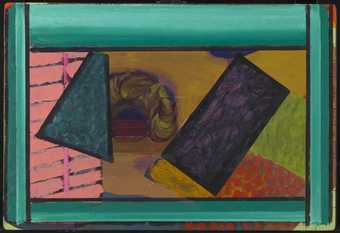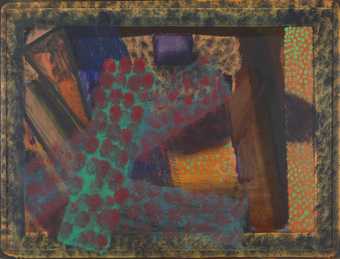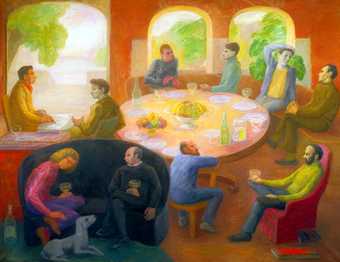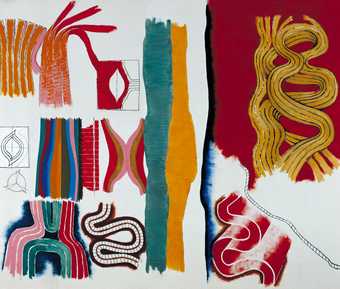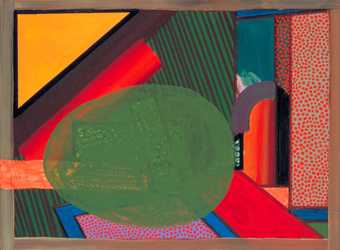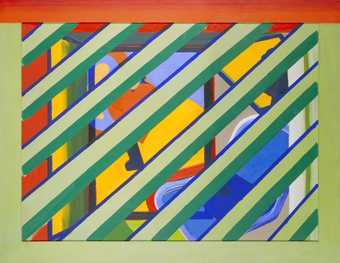
Not on display
- Artist
- Howard Hodgkin 1932–2017
- Medium
- Oil paint on canvas
- Dimensions
- Support: 1067 × 1270 mm
frame: 1123 × 1327 × 70 mm - Collection
- Tate
- Acquisition
- Presented by Eliot Hodgkin 1969
- Reference
- T01137
Display caption
This painting recalls a dinner party in March 1964 hosted by the painter Bernard Cohen and his wife Jeannie. Hodgkin later recalled, 'I had to contend with a nervous and glittering evening in a green and white room full of small B. Cohens on the wall'. Some of the marks in this picture are based on the forms in Cohen's paintings. Hodgkin explained the white line represented the edge of the table, but also emphasised the flatness of the painting’s surface.
Gallery label, April 2019
Does this text contain inaccurate information or language that you feel we should improve or change? We would like to hear from you.
Catalogue entry
T01137 DINNER AT WEST HILL 1964–6
Inscribed by artist on masking tape attached to canvas turnover ‘Dinner at West Hill 1963–6 Howard Hodgkin’.
Canvas, 42×50 (106.5×127).
Presented by Mr Eliot Hodgkin 1969.
Coll: Charles Ewart (bought from Arthur Tooth & Sons); Eliot Hodgkin.
Exh: Arthur Tooth & Sons, February–March 1967 (12, repr.).
The artist wrote (8 May 1970): ‘“Dinner at West Hill” is perhaps the most complicated and delicately balanced picture I have so far allowed myself. It commemorates a dinner party given by Bernard & Jeanie Cohen on March 15th 1964, so the original date of the picture is a year too early. Most of the forms in the painting which are not part of my normal language derive of course from Bernard's pictures. In some cases these even overlap (his and my forms). This painting was very difficult to conclude as I had to contend with a nervous and glittering evening in a green and white room full of small B. Cohens on the wall and Tony and Jaschia R[eichardt]. (to the L in the picture, Tony at Far L) and also Bernard's pictures which were particularly undisciplined and Dionysiac at that moment and of course finally and most difficult to contain all these things inside an object as formally and physically solid as a table or chair. I have gone nearer illusionistic space than at any other time. The white line is the picture plane, the edge of the table, also it cuts the picture in two and shows therefore in two ways that everything is flat—the illusionism isn't a lie after all.’
Published in:
The Tate Gallery 1968-70, London 1970
Explore
- abstraction(8,615)
-
- from recognisable sources(3,634)
- non-representational(6,161)
-
- colour(2,481)
- irregular forms(2,007)
- domestic(1,795)
-
- dining room(64)
- eating and drinking(409)
-
- dinner party(132)
- bottle(289)
- individuals: female(1,698)
- individuals: male(1,841)
You might like
-
Ben Nicholson OM 1945 (still life)
1945 -
Howard Hodgkin Interior with Figure
1966 -
Howard Hodgkin Cardo’s Bar (Black)
1979 -
Howard Hodgkin Cardo’s Bar (Red)
1979 -
Martin Froy Two Figures Summer ‘61
1961 -
Robert Medley Figuration on White
1963 -
Howard Hodgkin Mrs Nicholas Monro
1966–9 -
Howard Hodgkin Interior of a Museum
1956–9 -
Howard Hodgkin Mr and Mrs Stephen Buckley
1974–6 -
Howard Hodgkin Dinner at Smith Square
1975–9 -
Helen Lessore Symposium I
1974–77 -
Harold Cohen Before the Event
1963 -
Howard Hodgkin Clean Sheets
1979–84 -
Howard Hodgkin Mr and Mrs E.J.P.
1969–73 -
Howard Hodgkin R.B.K.
1969–70

